|
Regiment of Horse Grenadiers • 1804-14 |
|
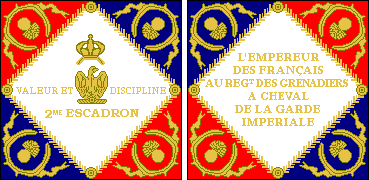
Model of 1804-11 |
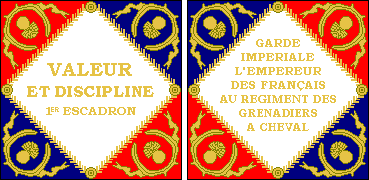
Model of 1811-12 |
|
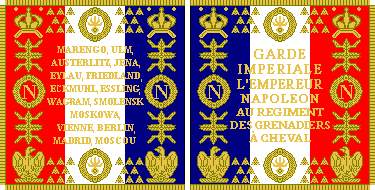
Model of
1812-14 |
|
Legion of Gendarmerie • 1804-14 |
|
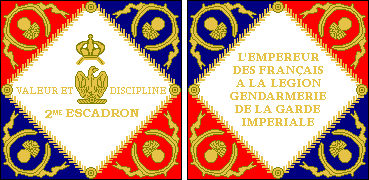
Model of 1804-11 |
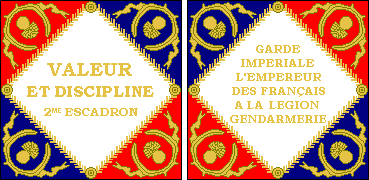
Model of 1811-12 |
|
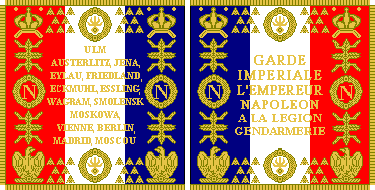
Model of 1812-14 |
The Regiment
des Grenadiers à Cheval of the Imperial Guard was the
senior cavalry regiment of the Army, nicknamed the "Bigheels" from
the tall riding boots worn. It was one of the two Guard cavalry
regiments to bear the battle honor MARENGO on its 1812-pattern
standard. The regiment's blue uniform was similar to
that of the Grenadiers à Pied, complete with the bearskin
bonnet. The Legion Gendarmerie d'Élite was the military
police corps of the Guard; its uniform was similar to that of the
Grenadiers à Cheval.
The corps was nicknamed, somewhat derisively, the
"Immortals"—this because its duties did not at first include
participation in battle. In later campaigns, however, the
Gendarmerie d'Élite was attached to the
Grenadiers à Cheval
and fought as heavy cavalry. Both units were mounted on black
horses; troopers were armed with a sword, a pair of pistols and a
dragoon musket with bayonet.
|
|
Regiment of Chasseurs-on-Horse • 1804-14 |
|
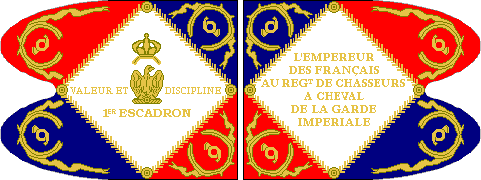
Model of 1804-1811 |
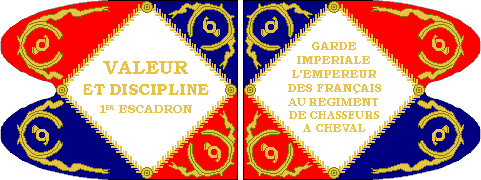
Model of 1811-12 |
|
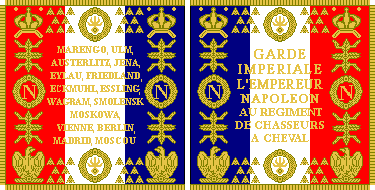
Model of
1812-14 |
The Regiment
de Chasseurs à Cheval was the light cavalry regiment of the
Imperial Guard. Like the Grenadiers à Cheval
it originated as
a unit of the Consular Guard, called the Guides. It shared with the
Grenadiers à Cheval the distinction of bearing the battle honor
MARENGO on its 1812-pattern standard. Magnificently
uniformed in the hussar style, the Chasseurs à Cheval
provided the Emperor's personal escort on campaign: a detachment
consisting of a lieutenant, a sergeant, two corporals, a trumpeter
and twenty-two troopers. On campaign the green hussar jacket and
scarlet hussar pelisse were replaced by a green coatee; this uniform
was often worn by Napoleon himself. Troopers were armed with a
saber, a pair of pistols, a carbine and a bayonet.
|
|
Regiment of Dragoons • 1806-14 |
|
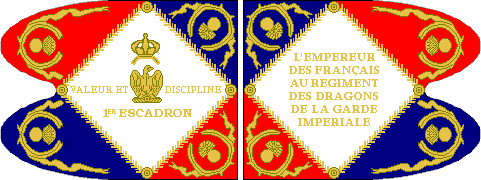
Model of 1806-11 |
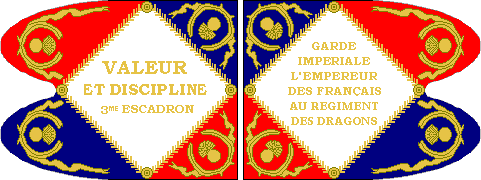
Model of 1811-12 |
|
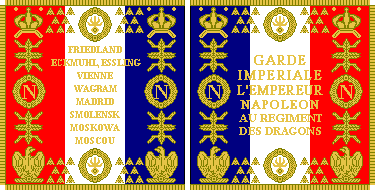
Model of
1812-14 |
The Regiment
des Dragons was
added to the Imperial Guard in 1806. It had the same establishment
and wore the same uniform as the Grenadiers à Cheval
except that the coat was green, not blue, and the bearskin bonnet was
replaced by a brass dragoon helmet. Troopers were armed with a
sword, a pair of pistols and a dragoon musket with bayonet. The Empress Josephine became the
patroness of the regiment in 1807 and thereafter it was nicknamed the
Dragons de l’Imperatice
(Empress Dragoons). For many years after the wars the survivors of
the regiment held an annual reunion on the anniversary of
Josephine's death.
|
|
Company of Mameluks • 1804-14 |
|
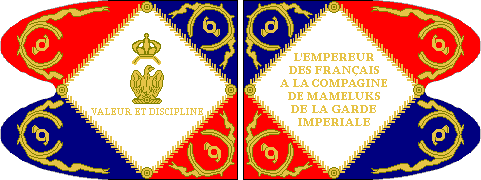
Model of 1804-12 |
The Compagine de Mamelukes (expanded to a squadron in 1813) traced
its origins to Napoleon's Egyptian campaign of of 1798-99.
Originally it was formed with deserters from the service of the
Egyptian pasha, supplemented by by a miscellany of fugitive slaves.
When the Imperial Guard was set up in 1804, the Mamelukes were
attached to the Chasseurs à Cheval.
Over
the years its ranks were refilled with recruits from wherever they
could be obtained and when the squadron was disbanded in 1814 only
eighteen real Mamelukes remained. Armed and equipped similarly to
the Chasseurs à
Cheval, the Mameluks wore
an exotic oriental-style uniform.
|
|
Polish
Light Horse & Light Horse Lancers • 1807-14 |
|
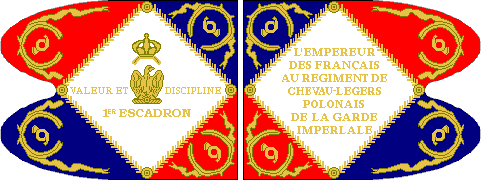
Model of 1807-09 |
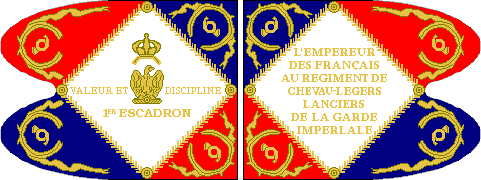
Model of 1809-11 |
| 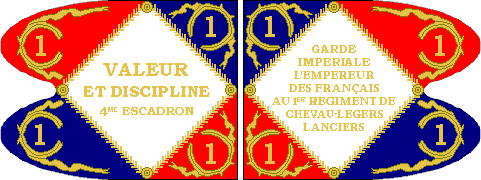
Model of 1811-12 |
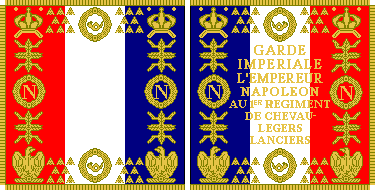
Model of 1812-14 |
When he entered Warsaw in December
1806 Napoleon was given a mounted escort of Polish nobles. Their
smart military bearing so impressed him that he decided to add a
regiment of Chevau-Legers Polonais (Polish Light Horse) to
his Imperial Guard. The uniform was blue with crimson plastron
lapels and a Polish-style shako, called the
czapka. In 1809
the Chevau-Legers Polonais became the
Chevau-Legers
Lanciers (Light Horse Lancers). When a second lancer regiment
was added to the Guard in 1810 the Polish regiment became the 1st
Regiment of Light Horse Lancers of the Imperial Guard. Troopers were
originally armed with a saber, a pair of pistols, a carbine and a
bayonet, to which the lance was added in 1809.
|
















